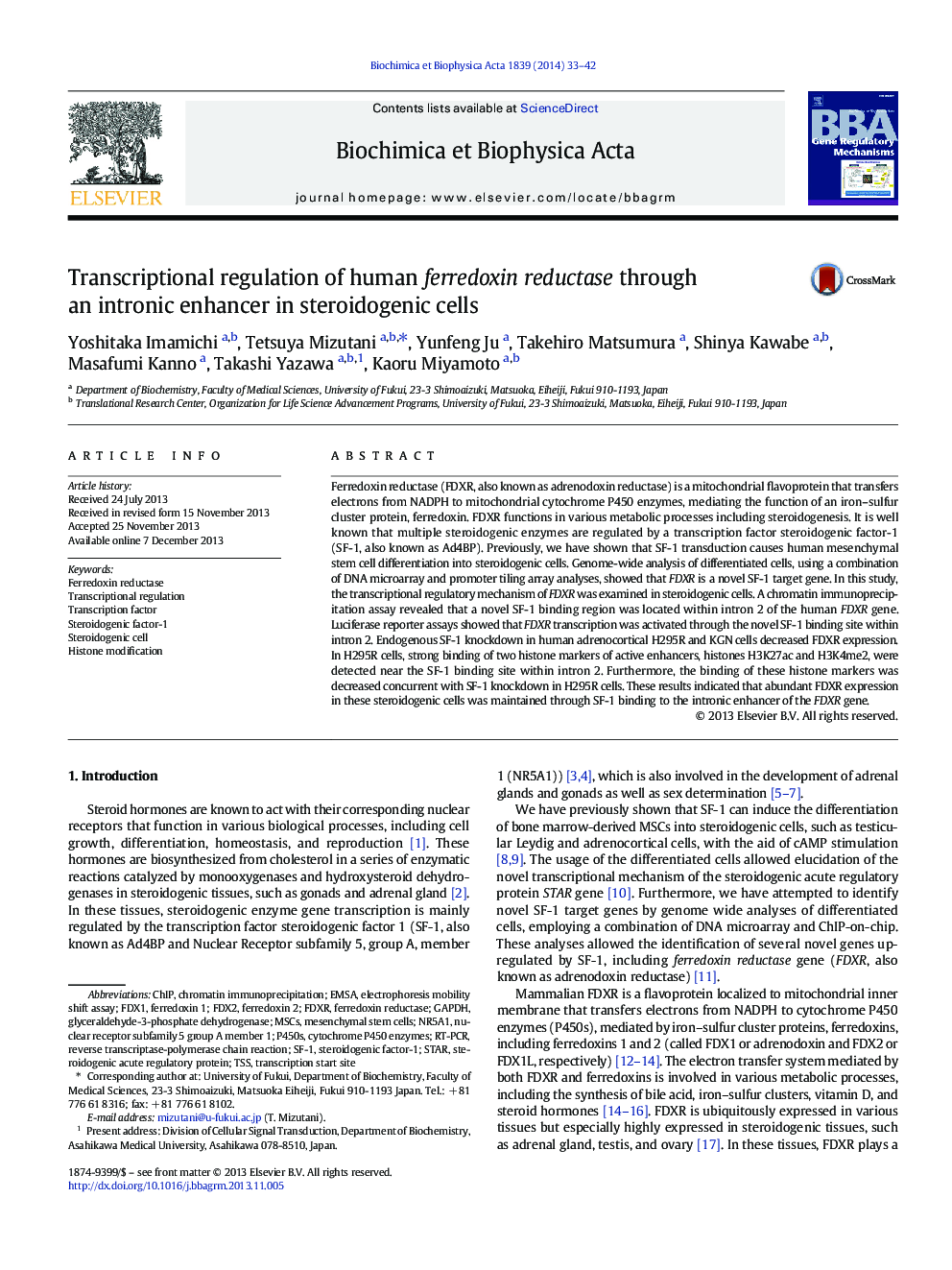| کد مقاله | کد نشریه | سال انتشار | مقاله انگلیسی | نسخه تمام متن |
|---|---|---|---|---|
| 1946433 | 1054233 | 2014 | 10 صفحه PDF | دانلود رایگان |
• Expression of FDXR is activated by SF-1 in steroidogenic cells.
• SF-1 directly binds to the FDXR gene's intron 2 and enhances transcriptional activity.
• SF-1 affects the chromatin state around its binding site of the FDXR gene's intron 2.
Ferredoxin reductase (FDXR, also known as adrenodoxin reductase) is a mitochondrial flavoprotein that transfers electrons from NADPH to mitochondrial cytochrome P450 enzymes, mediating the function of an iron–sulfur cluster protein, ferredoxin. FDXR functions in various metabolic processes including steroidogenesis. It is well known that multiple steroidogenic enzymes are regulated by a transcription factor steroidogenic factor-1 (SF-1, also known as Ad4BP). Previously, we have shown that SF-1 transduction causes human mesenchymal stem cell differentiation into steroidogenic cells. Genome-wide analysis of differentiated cells, using a combination of DNA microarray and promoter tiling array analyses, showed that FDXR is a novel SF-1 target gene. In this study, the transcriptional regulatory mechanism of FDXR was examined in steroidogenic cells. A chromatin immunoprecipitation assay revealed that a novel SF-1 binding region was located within intron 2 of the human FDXR gene. Luciferase reporter assays showed that FDXR transcription was activated through the novel SF-1 binding site within intron 2. Endogenous SF-1 knockdown in human adrenocortical H295R and KGN cells decreased FDXR expression. In H295R cells, strong binding of two histone markers of active enhancers, histones H3K27ac and H3K4me2, were detected near the SF-1 binding site within intron 2. Furthermore, the binding of these histone markers was decreased concurrent with SF-1 knockdown in H295R cells. These results indicated that abundant FDXR expression in these steroidogenic cells was maintained through SF-1 binding to the intronic enhancer of the FDXR gene.
Journal: Biochimica et Biophysica Acta (BBA) - Gene Regulatory Mechanisms - Volume 1839, Issue 1, January 2014, Pages 33–42
